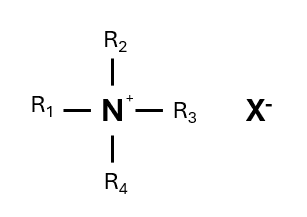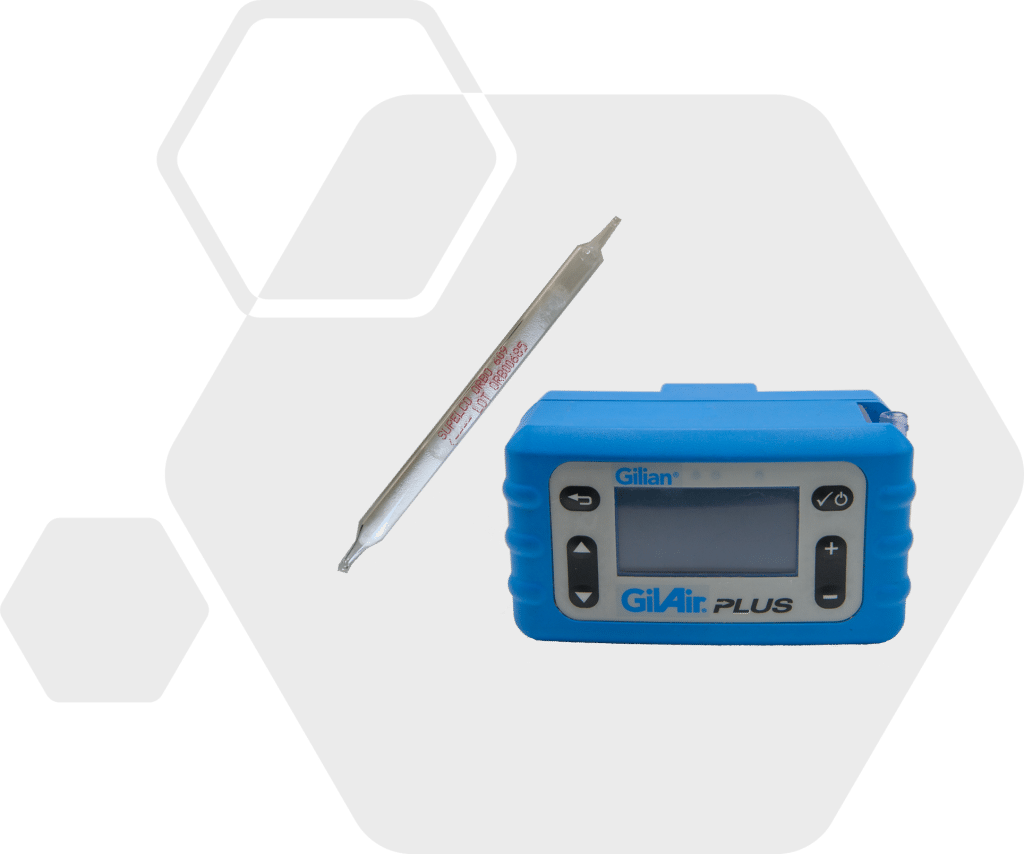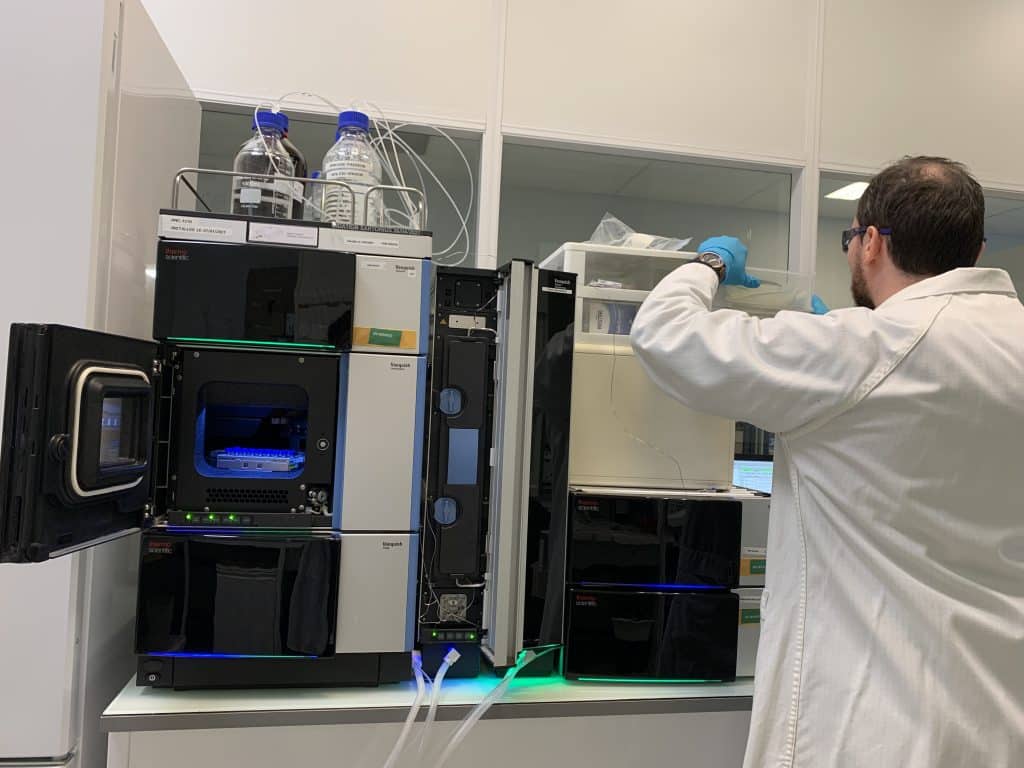
Measurement of quaternary ammoniums in workplace air
What are quaternary ammoniums?
- 1st generation: quaternary ammonium Benzalkonium chlorides (BAC) – CAS: 8001-54-5, mainly used in household products, antiseptic solutions and veterinary products. This generation comprises compounds with “alkyl” chains from C8 to C18.
- 2nd generation: quaternary ammoniums Alkyl dimethyl benzyl ammonium chlorides (ADBAC) – CAS: 68424-85-1, used as hospital disinfectants or industrial cleaners, with a broader spectrum of action than the first generation.

Properties and uses of quaternary ammoniums
Quaternary ammoniums are chemical compounds with disinfectant, surfactant and antistatic properties. Widely used in cleaning, cosmetic and industrial products, they eliminate bacteria, viruses and fungi by destroying their cell membranes. Although effective, they also present health risks (irritation, allergies).
In the respiratory tract, acute exposure to vapors or aerosols can cause :
- Irritation of the nose, throat and lungs
- Acute lung disease
Chronic exposure can lead to allergic manifestations. A few cases of occupational asthma and rhinitis caused by quaternary ammoniums have been reported: PubMed and INRS sources.
The main sectors concerned by the use of this family of compounds are presented below.

Workplace air / Occupational exposure
Hospitals, clinics and retirement homes
- Risk of exposure to cleaning staff, nurses and hospital workers through intensive use of quaternary ammonium-based disinfectants for cleaning surfaces and medical equipment.
Cleaning and maintenance companies
- Risk to staff using disinfectant solutions on a daily basis in offices, schools, hotels, airports, etc.
Pharmaceutical laboratories and industries
- Risk of exposure for laboratory technicians and production workers when using quaternary ammoniums for sterilization of equipment and surfaces.
Other sectors may also be concerned, such as food processing and catering (disinfection of production lines and work surfaces), cosmetics or chemical industries manufacturing household products.
How do you measure quaternary ammoniums in the workplace?
Several methods have been published for measuring quaternary ammoniums in the workplace, one of which involves pumping air through a tube filled with XAD-2 (active sampling): sources INRS and PubMed.
Our laboratory can help you with these samples by providing you with XAD-2 sampling tubes and sampling pumps.

Why trust us with your quaternary ammoniums measurements ?
TERA Environnement offers quaternary ammonium measurement using a method adapted from two papers published on PubMed: HPLC-UV analysis of tubes filled with XAD-2.
We are able to measure around ten compounds among first-generation (BAC, CAS: 8001-54-5 from C8 to C18) and second generation quaternary ammoniums (ADBAC – CAS: 68424-85-1).
Analysis of quaternary ammoniums by HPLC-UV after active sampling on XAD-2 tube

HPLC-UV analysis of quaternary ammoniums
Contact us to find out more about our media supply and analysis services.
Do you have any questions or do you need a quote? Contact us to find out more about our analysis services.
